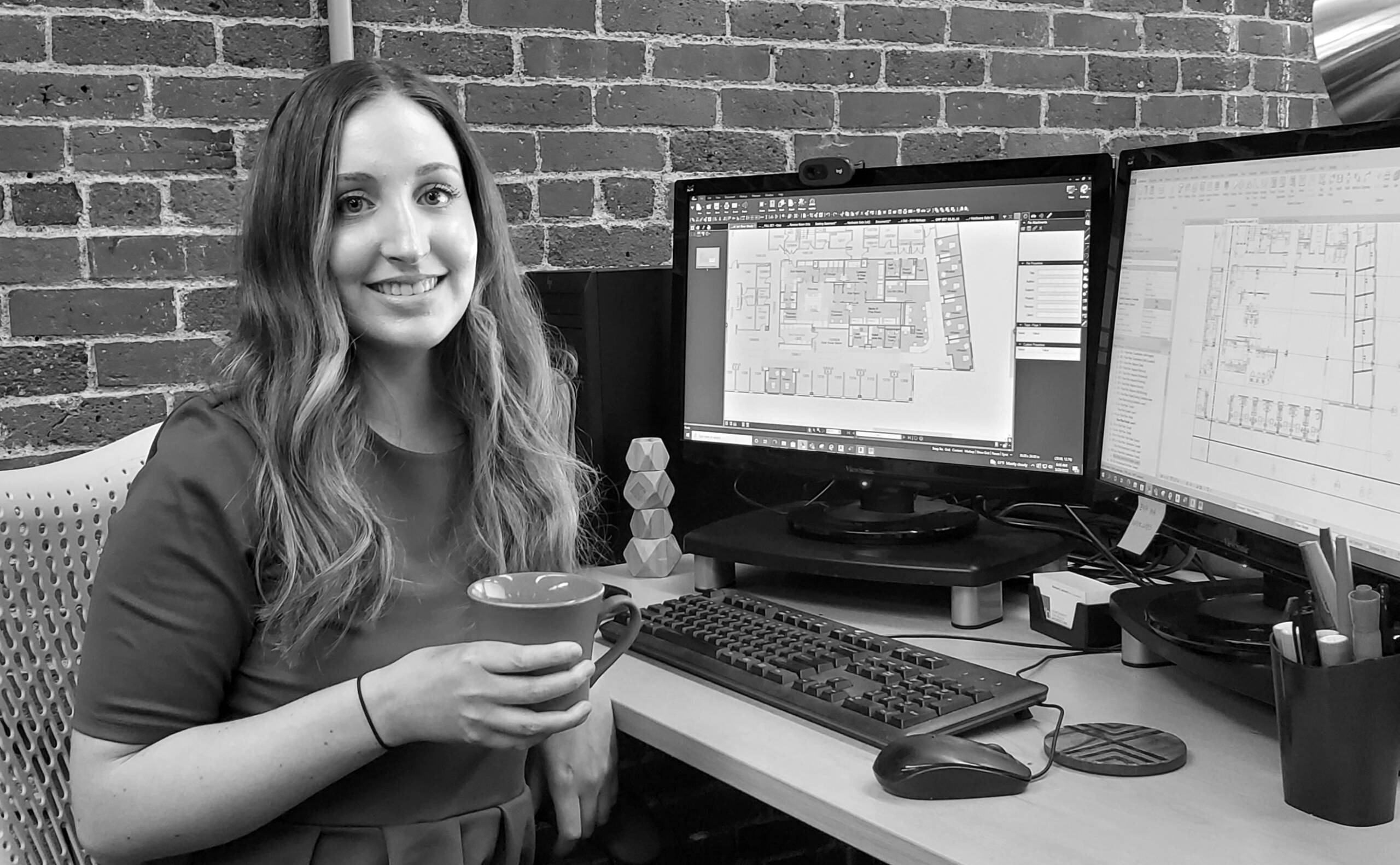10Qs: Getting to Know the People Behind the Projects…Kimberly
posted June 1st, 2022 in Healthcare
by E4H
#10Qs #e4hfamily
Share

“What struck me the most about this project is how important it was to the client [Commonwealth Care Alliance] that the individuals their health center serves, had the opportunity to voice their opinions and concerns to us during the design process.”
Kimberly Leonard, EDAC, LEED AP BD+C, is a healthcare designer in the Boston office. She is a guest panelist at the Environmental Design Research Association (EDRA) Conference June 2nd, presenting with her client Commonwealth Care Alliance.
1. Where did you grow up?
I grew up in Pembroke, MA.
2. How did you get into design?
As soon as I could put crayon to paper, my Mom had me drawing but my Grandpa is the one who showed me that something you draw, can actually be built. He designed and built his own shed and screen house where we used to spend a lot of time during the summer. On the other hand, my Dad was involved in the construction industry while I was growing up and caught onto my interest in design and the built environment, so I remember one time he brought home blueprints and renderings of a project that he was working on which opened my eyes to the architecture industry even more. Strangely enough, I almost went to college for Psychology. It was between Psychology and Architecture, but once I realized there was a link between psychology and architecture, I was sold on Architecture.
3. Who influenced you?
My Mom has been a big influence on me. She is the strongest, most selfless, and caring person I know, and has always supported me and encouraged me to do my best. She has been the biggest influence on who I am as a person today.
4. Why healthcare architecture?
I was introduced to healthcare architecture while going to school for my architecture degree. We were given the assignment to design a rehabilitation center and as soon as I started working on this project it lit a fire in me. I then interned at a healthcare only architecture firm and fell even more in love with healthcare design. The more I started to learn about the impact design and the environment can have on people mentally and emotionally, the more I saw the link between architecture and psychology – which fueled my interest in healthcare architecture specifically. We will all have to go into a healthcare setting at some point, and historically that can be a scary, stressful, or an emotional experience for why someone is there. We can lessen the stress associated with that experience through our design.
5. What inspires you?
People. Everyone’s experience in life is uniquely their own. The more people I meet, the more stories I hear of other’s experiences, the more I learn, the more inspired I become.
6. What advice can you give young designers?
Ask questions. Take notes. Believe in your own potential and get comfortable with being uncomfortable. I also want to stress that it’s important to develop your own support team – this will come with time, but these people will be critical to your growth.
7. Most memorable projects?
Working on Commonwealth Care Alliance’s Community Health Center has been impactful. What struck me the most about this project is how important it was to the client that the individuals their health center serves, had the opportunity to voice their opinions and concerns to us during the design process. I believe this was paramount to reaching a successful project design, and it opened my eyes to how important it is to involve the end-users in early conversations around a project’s design.
8. What is your favorite part of the design process?
I have two favorite parts – collecting information and understanding the client’s/end-user needs, as well as assembling the documents and coordinating all the different components that make up the project.
9. Where do you see healthcare design in 5 years?
I believe (and hope) that in 5 years most healthcare facilities throughout the country won’t look like they did during past generations. New innovations and an understanding of how our environments impact the humans that inhabit them, the less hospitals and behavioral health facilities will look and feel like they did in the past. I believe there will be even more of an emphasis on a need for spaces that are designed with flexibility in mind.
10. How do you unplug?
By spending time with my loved ones, going for walks, and trying new recipes in the kitchen.